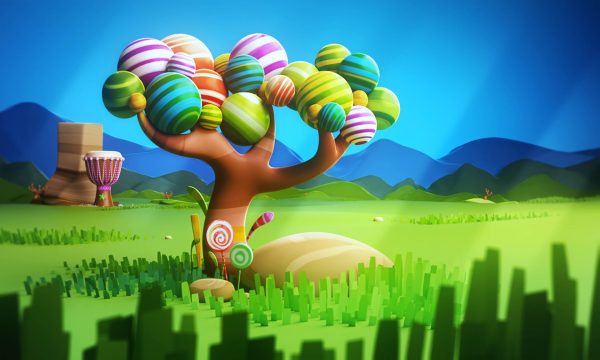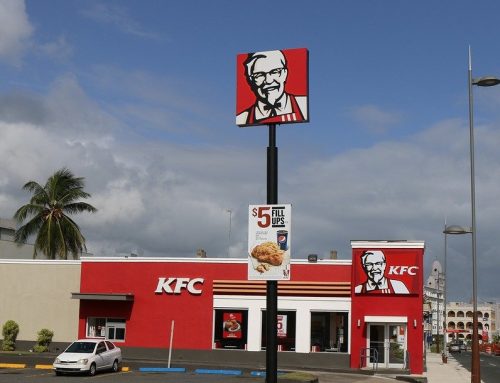Wie Sie ihre Texturen qualitativ auf ein neues Level heben.
Die 3D-Texturierung ist Bestandteil jeder Pipeline. Sie haben vielleicht ein fantastisches Modell, aber wenn die Texturen nicht korrekt aussehen, kann das das ganze Modell oder die gesamte Szene in Mitleidenschaft gezogen werden. Um ihren 3D-Modellen die erstaunlichen Texturen zu geben, die sie benötigen, fangen Sie an, diese Tipps für ihr nächstes Projekt zu beachten und bringen Sie damit ihre Texturen auf ein neues Level.

Erstellen Sie ein großartiges UV-Layout. Dieser Tipp sollte wohl selbstverständlich sein, aber dennoch erwähnt werden. Ein gutes UV-Layout ist unerlässlich, um eine felsenfeste Textur für ihr 3D-Modell zu erstellen. Ob es sich um ein einfaches Objekt oder einen komplexen Charakter handelt, um die Textur richtig zu platzieren, müssen die UVs effektiv abgebildet werden. Dieser Prozess ist oft langweilig und nicht sehr spannend, aber ob es ihnen gefällt oder nicht, es muss getan werden. Ohne eine gelungene UV-Map können die Texturen verzerrt oder gedehnt werden. Es gibt einige großartige Anwendungen, die diesen Prozess vereinfachen können. Zum Beispiel ist UVLayout eine großartige Software, die ausschließlich für das Layout ihrer UVs entwickelt wurde. Es ist auch wichtig, dass Sie überlappende UVs finden und reparieren. Dies kann relativ einfach mit ihrer 3D-Anwendung erfolgen. Überlappende UVs können später zu unerwünschten Ergebnissen führen, insbesondere wenn Sie Normal Maps verwenden müssen.
Verwenden Sie eine 3D Textur Painting Anwendung. Das Erstellen realistischer Texturen kann eine schwierige Sache sein, aber mit Hilfe einiger sehr leistungsfähiger Anwendungen wird es einfacher. Der Prozess des Handmalens von Texturen ist sehr wichtig, besonders bei der Erstellung von Texturen für Charaktere oder Kreaturen. Photoshop hat die Möglichkeit, 3D-Meshes auf die Leinwand zu importieren, so dass Sie ihre Texturen direkt auf ihr 3D-Modell malen können, ohne zu versuchen und zu verstehen, wie ihr UV-Layout ihrem Modell entspricht. Sculpting Anwendungen wie ZBrush oder Mudbox verfügen ebenfalls über leistungsstarke Painting-Funktionen, mit denen Sie Texturen direkt auf ihr Modell malen können. Die Entwicklung von MARI und seinen Painting-Funktionen hat zu einem Durchbruch bei der effizienten Texturierung ihrer 3D-Modelle geführt. Während das Malen von Texturen eine sehr schwierige Sache sein kann, helfen ihnen diese Anwendungen dabei, diesen Prozess schnell zu meistern und Sie auf den Weg zur Erstellung großartiger Texturen zu bringen.
Um ihre Texturen zu verkaufen und den Realismus zu erhöhen, können Sie Orte finden, an denen Sie Abnutzungserscheinungen in ihre Texturen integrieren können. Ihr erster Eindruck könnte darin bestehen, dass ihre Texturen perfekt und sauber sind. Dies ist nicht unbedingt eine schlechte Sache, besonders wenn Sie Texturen erstellen, bei denen dieser unverfälschte Look wichtig ist, wie z.B. bei der Produktvisualisierung. Meistens haben die Objekte ein abgenutztes und verwittertes Aussehen, ob es nun Staub, Kratzer oder Rost ist, auch wenn es sehr subtil ist. Diese kleinen Details helfen wirklich, den Realismus ihrer Texturen zu erhöhen. Zum Beispiel hat die Textur für die Jeans ihres Charakters eine kleine Verblassung um die Nähte oder die Knöpfe haben eine leichte Verfärbung und ein zerkratztes Aussehen. Es ist auch wichtig, dass Sie logisch denken, wenn Sie diese Abnutzung ihrer Texturen erzeugen. Es kann leicht sein, es zu übertreiben oder plötzlich sieht ihre Textur wie ein Durcheinander von Kratzern, Rost etc. aus, ohne wirkliche Absicht. Ein guter Ort, um Abnutzung in ihre Texturen zu integrieren, ist das Geländer auf einer Treppe. Denken Sie darüber nach, wo eine Person am ehesten ihre Hand zur Unterstützung ablegen würde und wie sich diese Stelle auf dem Geländer im Laufe der Zeit durch übermäßigen Gebrauch abnutzen würden.
Fotografien sind eine großartige Möglichkeit, um schnell glaubwürdige Texturen für ihre Charaktere oder Objekte zu erstellen. Sie können sie allein oder in Verbindung mit ihren gemalten Texturen verwenden, um sie noch weiter zu verbessern. Wenn Sie beispielsweise ein Foto auf ihrer Textur legen, können Sie diese Abnutzungsdetails relativ schnell erstellen. Sie können Texturen im Internet finden, aber es ist auch eine gute Idee, ihre eigene Texturbibliothek aufzubauen, indem Sie nach draußen gehen und alles fotografieren, was Sie interessant finden. Wenn Sie Texturen für ein Tier- oder Lebewesenmodell benötigen, gehen Sie in ihren Zoo und machen Sie so viele Fotos wie möglich. Eine große Texturbibliothek ist unerlässlich, um glaubwürdige Texturen zu erstellen. Egal, was Sie texturieren, denken Sie daran, dass es bei der Erstellung großartiger Texturen nicht immer um eine einzige Sache geht und dass es je nach Projekt nicht immer etwas sein kann, das alle hier genannten Tips erfordert. Ihre Texturen auf die nächste Stufe zu heben, kann eine Kombination aus einem sauberen UV-Layout und einigen tollen Fotos sein. Oder vielleicht braucht ihr Texturierungs-Workflow den zusätzlichen Schub, den nur eine spezielle 3D-Painting-Anwendung bieten kann. Wenn Sie das nächste Mal an einem Texturierungsprojekt arbeiten, probieren Sie einen oder mehrere dieser Tips aus und verschaffen Sie sich damit Klarheit, wie stark die Verbesserungen dadurch werden.
Vielen Dank für ihren Besuch.


